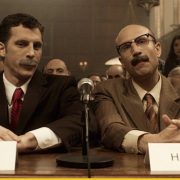Since October 1st of this year, the S & P 500 stock market index has fallen about 16%. So its fair to ask, why is this is happening with strong corporate earnings, employment, and US Gross Output data. But it’s not smart. Stock prices do not move in tandem with economic data, and are even less correlated with stock market forecasts.
Naysayers have been predicting this for a long time, so they eventually had to be right. For the same reason that the market’s cheerleaders eventually had to be proven wrong. The fact is that the US stock market is the largest, most liquid, most active, and most efficient stock market in the world. Discussing and listening to market forecasts can be interesting, but only research analysts, bank economists, and newsletter publishers make money from their rubbish. Individual investors have more reliable ways to make investment decisions.
The Fallacy of Wall Street Analysts
For evidence of forecasting hubris, look no further than the December 20th edition of the Wall Street Journal‘s “Streetwise” section. The article by James McIntosh begins by saying that market forecasters were having a good year this year, until they weren’t. Wow, who knew? He then stirs up the requisite fearmongering after the market decline by asking “is this the start of something much worse?” Later, he continues with another obligatory pronouncement: “My favored interpretation of the recent selloff is that investors were wildly overexuberant.” To generalize about “investors” and “overexuberance” like this is loaded with fallacies and dismisses the price mechanism inherent in free markets.
The statement implies that all investors are comparable, and to prove it, they were all simultaneously overexuberant. This is cheap analysis and defies reality. So were the aforementioned forecasters also overexuberant, but not the writer? But the real implication of the article is that markets fail, and they fail because of asymmetric information – everyone has incomplete information, and its not the same. And the implication of that is that all market participants must have perfect information to avoid market failure. This is the common wisdom, and dead wrong. As Brian P. Simpson tells us in his book Markets Don’t Fail:
However, one cannot change the nature of reality. One cannot wish asymmetric information out of existence, and one cannot wish perfect information into existence. One must accept reality as it is and use the nature of reality to his benefit. This is exactly what a division of labor society in the context of a free market allows people to do.
The point is that free markets are complex systems, and when left alone they behave in wonderfully efficient and life fulfilling ways. They are a force of nature and must be understood to be appreciated. The price mechanism of free markets is fundamental to capitalism, and individual investors who buy stocks in their many forms are buying capitalism.
The Nature of Markets
The information contained in prices provide the most reliable guidance for balancing our unique and competing long-term goals. Prices are an emergent phenomenon, they are the result of millions of people making choices in pursuit of their own unique values. They are like blockchain technology – a decentralized, self-perfecting, and horizontal structure. When market forces are understood, capitalism is appreciated in a profound way.
So if market forecasters have little regard for the price mechanism, what kind of information should individuals use to make personal investment decisions? It starts by minimizing potential errors, and one obvious potential source of error is market forecasts themselves, no matter whose they are. Another potential source of error is risk tolerance questionnaires. As clinical psychologist and investment advisor Phil Demuth advises about risk tolerance:
As a psychologist, I am unaware that such a trait exists – I believe that research would show this construct to be situation-specific. However, even if this trait did exist, it would be a terrible guide to investment decisions. Investors should invest in whatever way has the greatest likelihood of meeting their financial objectives.
One of the things investors can control is their exposure to risk, and as Demuth advises, risk exposure should be calibrated according to the probability of meeting and exceeding future financial goals. Trying to beat the market only adds more potential errors. According to Nobel prize winning research, the primary dimension of investment return is the market itself, owning stocks always outperforms owning bonds and cash over the long-run.
The Uncertainty of the Future
For an individual investor, stocks are a risk asset, much like America is a risk asset, and investment decisions such as exposure to risk should be based on future cash flow needs and other variables that are known and can be controlled. Yet the contradictions in the Wall Street Journal article continue to flow freely, for example “Investors who have no strong views on how these events will unfold should expect volatility.” The implication of this is absurd – you should have strong views about the future, and if you do, you can avoid volatility. How about avoid reality? But it gets better, “Those who had the foresight to sell heavily into the irrational strength of the U.S. stock market in the summer should begin buying back.” Even if this is “the start of something much worse?”
To accept reality is to respect America, capitalism, markets, and the uncertainty of the future. The biggest risk investors face is not markets, but government interference such as interest rate price fixing and global supply chain disruptions caused by economic protectionism. The most reliable way to manage risk exposure is probability analysis using a Monte Carlo simulator with objective capital market assumptions, the kind that anticipated the recent sell-off, and gave its informed users a Plan B. Instead of betting against the house, be the house. Market forecasters who think they can outguess America have no Plan B for you. The key is to change your performance benchmark away from some meaningless index like the S&P 500, and replace it with living the one life you have with confidence.













